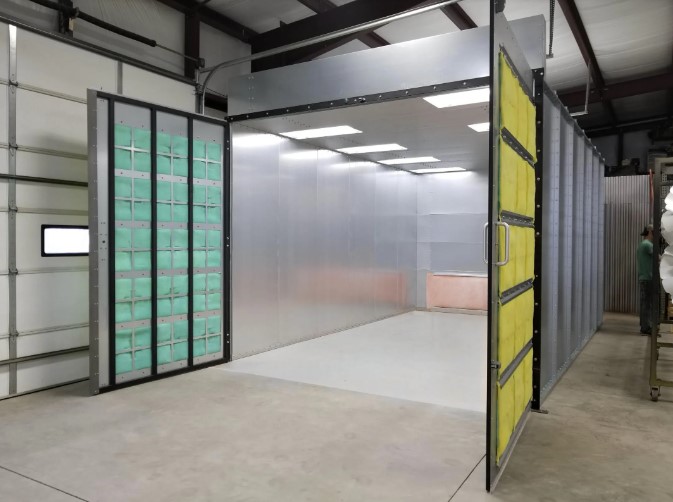Everything You Need to Know About EB-5 Visa Requirements

The United States Government created the EB-5 visa program to encourage foreign investment in American businesses and create jobs for American workers. In exchange for their investment, foreign nationals can become Green Card holders and enjoy permanent residency in the U.S.
There are many EB-5 requirements, and it is essential to understand them thoroughly before making any decisions. This article provides all the information you need about the EB-5 criteria to decide whether the EB-5 visa is correct for you.
EB-5 Visa Requirements
A few EB-5 visa requirements or the EB-5 visa process must be met before applying for your conditional green card. These include investing and establishing that your capital was used to create at least ten jobs.
You must also ensure your investment is a “capital investment” rather than a loan to the business. This means that you should invest money in a way that it could be used for the long term (not just sitting in a bank account).
The EB-5 program is designed to help the U.S. economy grow by attracting investments from foreign investors. It’s a federal program administered by USCIS and requires specific capital investment and job creation criteria.
It also has a cap of 10,000 visas issued each year. If demand for EB-5 tickets from a particular country is within the number of available keys, there is typically a backlog of applicants who must wait until the next issuance date.
In addition, you must prove that the new commercial enterprise in which you invested created or preserved at least ten full-time jobs for U.S. workers, which includes direct jobs for the investor, as well as indirect and induced jobs created by the NCE itself or by businesses that supply products or services to the NCE.
This requirement means that you must engage in the day-to-day management of the new commercial enterprise to qualify as an EB-5 investor. If you have a significant, active role in the company, this may be achieved by forming the business’s policies or handling day-to-day operations.
EB-5 Investment Requirements
The EB-5 Investment Visa program requires investing in a business and creating ten full-time jobs for U.S. workers. You can directly invest in a new commercial enterprise or a USCIS-designated regional center.
When you make a direct investment, the company you invest in must be a “for-profit” enterprise. This means it must have lawful activities and be legally established in the United States since November 29, 1990.
It would help if you were actively involved in managing your investment. This can be through day-to-day managerial control or policy formulation.
In addition, you must promptly demonstrate that your investment will lead to creating or preserving at least ten full-time U.S. jobs for qualified U.S. workers. This means you should be prepared to hire new employees within two years after conditional residency is granted.
Depending on the type of EB-5 investment, the investor may be required to use cash or non-cash assets to satisfy the capital investment requirement. When non-cash assets are used, they must be valued at their fair market value in U.S. dollars.
If you want to invest in a new business, consult a reputable immigration lawyer. They will help you analyze your investment for immigration compliance and prepare all necessary documents.
EB-5 Regional Center Requirements
The EB-5 Regional Center Requirements are essential to any EB-5 investment application. They can determine if your petition will be approved or denied and, if not, what the process of obtaining a green card looks like.
EB-5 investors typically invest in projects developed through an EB-5 regional center. These centers are regulated by the United States Citizenship and Immigration Services (USCIS) and can pool capital from many EB-5 investors to finance project development.
Because of this unique approach to raising funds, a regional center can support a broader range of businesses than traditional direct investments. This means that an investor could potentially invest in a company that is impossible to fund with a direct EB-5 investment.
Another significant difference between a regional center and direct investments is that investors can only employ workers indirectly. Instead, the new commercial enterprise can invest in or loan money to a completely unrelated business that will indirectly create jobs.
As with direct investments, regional centers must prove they will create ten new jobs for U.S. workers due to their project. This can be done through various methods, such as creating a business plan or other documents showing the investment will generate ten new jobs for residents.
EB-5 Direct Investment Requirements
If you are applying for an EB-5 visa, you must invest a certain amount. You can use your funds or borrow money from a bank. The amount you invest must be enough to start a new business or expand an existing one in the United States.
Whether you invest directly or through a regional center, the business you choose must create at least ten full-time jobs for U.S. workers to qualify for the EB-5 visa.
You must invest in a “New Commercial Enterprise” (NCE) to meet the requirement. This means that you need to be involved in the day-to-day management of the business. Alternatively, you can satisfy the management requirement by taking a relatively hands-off policy formulation role.
You can also count any indirect jobs created collaterally from your investment as part of the ten jobs required for your EB-5 visa. This includes job creation two years before you made your investment and job creation that began after your investment.
There are three ways to invest in an EB-5 project: direct investment, an EB-5 Regional Center, or a combination of both. The decision on which method to use depends on several factors, including the type of project you want to invest in and your level of experience and expertise.
:quality(70)/cloudfront-eu-central-1.images.arcpublishing.com/irishtimes/SL4ZJEXTC5DIXNN4OZFLJTU4UE.jpg)





